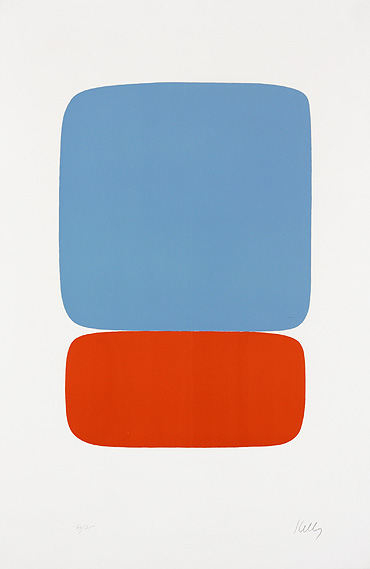Ellsworth Kelly
An american painter and sculptor associated with hard-edge painting, color field painting and the minimalist school. His works demonstrate unassuming techniques emphasizing the simplicity. His art pieces often involve vibrant colors and tones using different shapes and placements of images.
Ellsworth Kelly, evading critical attempts to classify him as a Color Field, hard-edge, or Minimalist painter, has redefined abstraction in art, establishing himself through his drawings, paintings, sculptures, and prints as one of the most important artists working today. Kelly's visual vocabulary is drawn from observation of the world around him—shapes and colors found in plants, architecture, shadows on a wall or a lake—and has been shaped by his interest in the spaces between places and objects and between his work and its viewers. He has said, "In my work, I don't want you to look at the surface; I want you to look at the form, the relationships." Rubin noted that “Kelly’s development had been resolutely inner-directed: neither a reaction to Abstract Expressionism nor the outcome of a dialogue with his contemporaries.”[12] Many of his paintings consist of a single (usually bright) color, with some canvases being of irregular shape, sometimes called "shaped canvases." The quality of line seen in his paintings and in the form of his shaped canvases is very subtle, and implies perfection.
An american painter and sculptor associated with hard-edge painting, color field painting and the minimalist school. His works demonstrate unassuming techniques emphasizing the simplicity. His art pieces often involve vibrant colors and tones using different shapes and placements of images.
Key Ideas
- Kelly intends for viewers to experience his artwork with instinctive, physical responses to structure and color rather than with attempts at contextual analysis. He encourages this active participation through bold and contrasting colors that engage the eye, layered panels protruding from the wall and irregular forms that challenge perception.
- Kelly's real-life observations are the backbone of his work. He produces direct - yet abstracted - replications of the shapes, shadows and contrasts he perceives around him. At the same time, while using reality as inspiration, he aims to establish new, unrecognizable forms.
- Kelly was pioneering in his view of the painting as an object. He creates canvases free of gestural brushstrokes or imagery, so their content resides purely in their physical shapes and interactions with the surrounding space.
Ellsworth Kelly, evading critical attempts to classify him as a Color Field, hard-edge, or Minimalist painter, has redefined abstraction in art, establishing himself through his drawings, paintings, sculptures, and prints as one of the most important artists working today. Kelly's visual vocabulary is drawn from observation of the world around him—shapes and colors found in plants, architecture, shadows on a wall or a lake—and has been shaped by his interest in the spaces between places and objects and between his work and its viewers. He has said, "In my work, I don't want you to look at the surface; I want you to look at the form, the relationships." Rubin noted that “Kelly’s development had been resolutely inner-directed: neither a reaction to Abstract Expressionism nor the outcome of a dialogue with his contemporaries.”[12] Many of his paintings consist of a single (usually bright) color, with some canvases being of irregular shape, sometimes called "shaped canvases." The quality of line seen in his paintings and in the form of his shaped canvases is very subtle, and implies perfection.





No comments:
Post a Comment